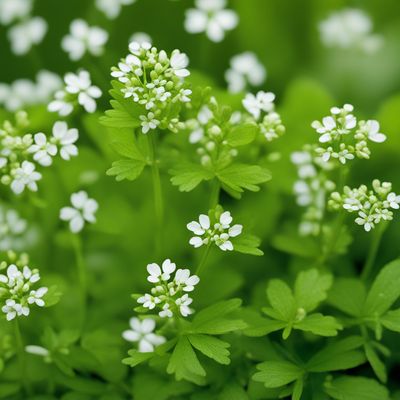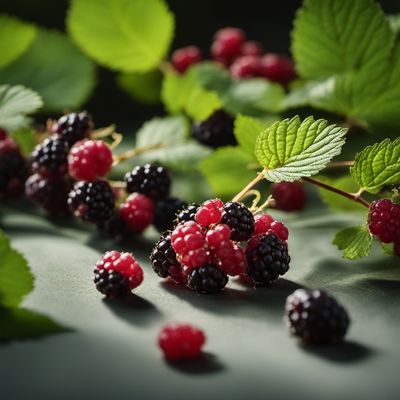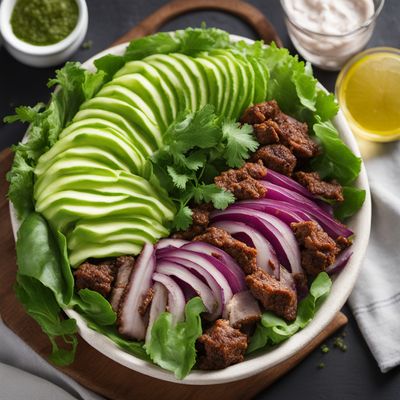
Ingredient
Goldenrod infusion leaves
Goldenrod Elixir: Unlocking the Healing Power of Nature
Goldenrod infusion leaves are slender, vibrant green leaves that possess a subtle floral aroma and a slightly bitter taste. They are often used to make herbal teas, tinctures, or infused oils due to their healing properties and ability to promote urinary tract health. The leaves have a smooth texture and can be enjoyed both hot and cold.
Origins and history
Goldenrod infusion leaves have a rich history in traditional medicine, dating back centuries. Native to North America, these leaves were used by Indigenous peoples for their diuretic and anti-inflammatory properties. They were also believed to have healing effects on the urinary system. Today, goldenrod infusion leaves are still highly regarded in herbal medicine and are commonly used to support urinary tract health and alleviate allergies.
Nutritional information
Goldenrod infusion leaves are low in calories and rich in antioxidants, vitamins, and minerals. They are a good source of vitamin C, vitamin A, and potassium, which support immune function and overall health. Additionally, they contain flavonoids that have anti-inflammatory properties.
Allergens
There are no known allergens associated with goldenrod infusion leaves.
How to select
When selecting goldenrod infusion leaves, look for fresh, vibrant green leaves without any signs of wilting or discoloration. Avoid leaves that appear yellow or brown, as they may be past their prime. Opt for organically grown leaves to ensure they are free from pesticides or other harmful chemicals.
Storage recommendations
To store goldenrod infusion leaves, gently wash and pat them dry. Place the leaves in a resealable bag or an airtight container lined with a paper towel to absorb excess moisture. Store them in the refrigerator for up to one week. For longer-term storage, consider drying the leaves and storing them in a cool, dark place in an airtight container.
How to produce
Goldenrod infusion leaves can be easily grown in a home garden or even in pots on a balcony. They thrive in well-drained soil and prefer full sun or partial shade. Regular watering and occasional pruning will help maintain their health and vitality.
Preparation tips
To prepare goldenrod infusion leaves, steep a handful of fresh leaves in hot water for 5-10 minutes to make a soothing herbal tea. You can also infuse the leaves in oil to create a fragrant massage oil or add them to homemade tinctures for their medicinal benefits. Remember to strain the leaves before consuming or using the infusion.
Culinary uses
Goldenrod infusion leaves are commonly used to make herbal teas, tinctures, and infused oils. They can also be added to salads, soups, or stews for a subtle floral flavor and a touch of bitterness. In traditional medicine, goldenrod infusion leaves are believed to support urinary tract health and alleviate allergies.
Availability
Goldenrod infusion leaves are commonly available in North America, particularly in the United States and Canada. They can also be found in some European countries.
More ingredients from this category » Browse all

Sweet woodruff infusion leaves
Fragrant Elixir: Exploring the Delights of Sweet Woodruff Infusion Leaves

Mullein infusion leaves
"Nature's Respiratory Remedy: Exploring the Benefits of Mullein Infusion Leaves"

Chiretta infusion leaves
The Bitter Elixir: Unveiling the Power of Chiretta Infusion Leaves

Cowberry infusion leaves
The Nordic Elixir: Cowberry Infusion Leaves

Bilberry infusion leaves
The Berry's Brew

Sweet blackberry infusion leaves
The Berry's Aromatic Brew

Plantain infusion leaves
The Versatile Herb

Hearts ease infusion leaves
The Soothing Elixir of Hearts Ease

Lemon verbena infusion leaves
The Zesty Elixir: Unveiling the Magic of Lemon Verbena Infusion Leaves

Lemon myrtle infusion leaves
The Zesty Elixir: Lemon Myrtle Infusion Leaves

Mistletoe infusion leaves
The Magical Elixir: Mistletoe Infusion Leaves

Oat infusion leaves
The Soothing Elixir: Oat Infusion Leaves


